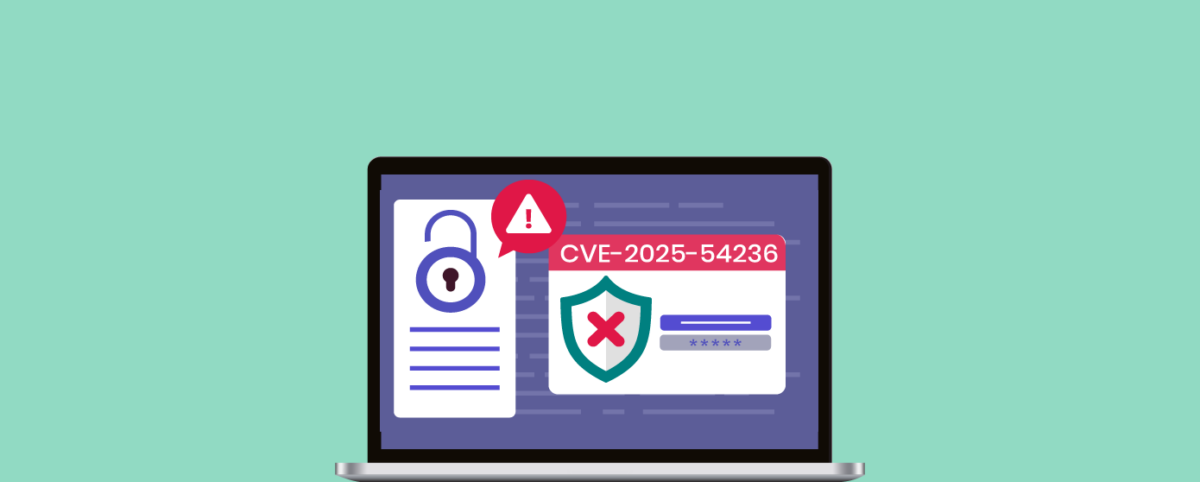IRDAI Compliance Requirements and How AppTrana Helps You Meet Them
The insurance sector is under siege. In 2024, Indusface tracked 495 million attacks on insurance websites and APIs, proving that cybercriminals are moving from random attempts to precise, automated campaigns.
Here is the reality insurers face:
- Attacks per site jumped 3X in just one year
- Exploits of known vulnerabilities spiked 8X
- Bot traffic is 2.5X higher than in other industries
In response to this growing threat, IRDAI (The Insurance Regulatory and Development Authority of India) introduced the Information and Cybersecurity Guidelines 2023, replacing the 2017 framework. These guidelines emphasize the need for insurers to strengthen defenses, monitor threats continuously, enforce strong governance, and build security awareness across the organization. This blog explores what these requirements mean for insurers and how AppTrana WAAP helps meet compliance while ensuring resilience against evolving cyberattacks.
IRDAI Compliance Requirements Mapped with AppTrana WAAP Capabilities
1. Monitoring, Logging, and Assessment (2.16, 3.1, 3.3.1)
IRDAI Requirements
Organizations must continuously monitor all critical information systems used for processing, storage, or security. Key requirements include:
- Real-Time Monitoring & Automated Detection: Monitor systems continuously using manual or automated alert-generating tools to detect significant deviations from normal activity.
- Comprehensive Logging: Log all activities, business transactions, and external communications, especially for high-risk or critical systems, with periodic or real-time review.
- Periodic Security Assessments: Conduct device configuration reviews, security testing, and process evaluations at regular intervals or as one-time assessments.
- Network Access Control: Secure communications to and from external networks, enforce acceptable usage policies, and filter internet access where required.
- Incident Management: Any detected breach must be treated as an incident under the organization’s incident management policy.
- Risk-Based Monitoring: Apply classification-based monitoring, giving priority to critical assets while balancing performance impact on low-risk systems.
How AppTrana Helps
- AI-Powered Real-Time Monitoring: Uses AI to detect anomalies, unusual access patterns, and emerging threats instantly.
- Centralized Logging & Audit: Captures detailed logs of all web and API transactions with the ability for periodic or manual review.
- Vulnerability Assessment: Continuous automated scans and expert verification of all critical, high and medium vulnerabilities.
- Policy Enforcement: IP/Geo filtering, access controls, and adherence to acceptable usage policies.
- Expert Verification & Alerting: Eliminates false positives with AI driven analysis combined with manual verification while ensuring actionable alerts for security teams.
2. Security Assessments (3.6.1)
Requirement 3.6.1: Security Assessments for Infrastructure and Applications
IRDAI Requirements:
- Define standards for vulnerability assessment and security review.
- VAPT for internet-facing systems at least once per year.
- Mandatory testing for all changes before production deployment.
- Business applications, APIs, and web services must undergo VAPT and secure code review before go-live.
- External blackbox penetration testing for all internet-facing systems every six months.
- Document all risks and close high-risk gaps within one month; all gaps must close within two months.
- Communicate assessment results to vendors/third-party service providers.
How AppTrana WAAP Helps:
- Continuous VAPT: Automated scans with expert verification, covering all critical web applications and APIs.
- Change-triggered Retesting: Automated trigger of scans for every code-check in through tight CI/CD integrations.
- AcuRisQ High-risk vulnerabilities are prioritized for remediation with verification.
- SwyftComply Instant patching of open vulnerabilities, ensuring timely mitigation and continuous protection.
- Zero Vulnerability Report: Confirming that all critical assets, applications, and infrastructure are fully secured. This provides clear, verifiable evidence for auditors and regulators, making IRDAI compliance easier to demonstrate.
3. Situational Awareness (2.18)
IRDAI Requirements:
- Identify potential cyber threats affecting operations, objectives, critical processes, or reputation.
- Establish threat intelligence and analysis processes using internal/external sources.
- Share information through trusted channels during incidents and participate in sector-wide intelligence sharing.
How AppTrana Helps:
- Real-time Threat Detection: AppTrana WAAP continuously monitors web applications and APIs, for OWASP Top 10 attacks like SQL injection, XSS, and DDoS attacks before they impact operations or reputation.
- Threat Intelligence & Analysis: AppTrana leverages AI-powered monitoring to include the latest threat intelligence. This helps in real-time patching of zero-day vulnerabilities and stay ahead of emerging threats.
- Integration with SIEM: AppTrana feeds alerts and detailed threat logs into SIEM tools, enabling centralized analysis and correlation with other security events.
- Incident Tracking via Jira: Security incidents detected by AppTrana can be automatically logged into Jira, allowing structured tracking, assignment, and resolution workflows. This ensures quick response and accountability.
4. Cyber Resilience (2.20)
Build organizational ability to continue operations despite cyber incidents.
Requirement 3.2: Cyber Resilience Program
Components:
- Identification: Classify critical systems and incidents based on severity.
- Protection: Implement security controls, least-privilege access, and resilience by design.
- Detection: Monitor critical systems for anomalies (refer to 2.16 policy).
- Response & Recovery: Integrate contingency planning, disaster recovery, and business continuity.
- Testing: Perform VA/PT at different stages of development and maintenance.
- Learning & Reporting: Continuous evaluation of cybersecurity management effectiveness; report incidents to regulators.
How AppTrana Helps:
- Asset Discovery & Risk-Based Prioritization: Automatically identifies all applications, APIs, and critical assets and classifies them by importance.
- Inbuilt DAST Scanner: Performs automated scans and expert-led manual penetration testing across development and production environments, ensuring vulnerabilities are detected and mitigated at all stages.
- Fully Managed WAF & Security Rule Enforcement: Protects against OWASP Top 10 threats, bot attacks DDoS, and client-side risks (like formjackingor malicious scripts). Security rules can be customized to enforce specific protection policies and operational requirements.
- Real-Time Monitoring & Alerts: Continuously tracks application and API activity, using AI-powered anomaly detection to identify unusual behavior, potential breaches, or emerging threats.
- Automated Attack Blocking & Remediation Guidance: Blocks attacks instantly at the edge, provides actionable remediation recommendations, and ensures alignment with business continuity and disaster recovery plans.
- Audit-Ready Reports: Generates detailed reports, tracks incidents and remediation trends, and provides actionable insights for continuous improvement and risk management.
- Integration & Incident Management: Can integrate with SIEM and Jira to log incidents, track remediation workflows, and ensure accountability across teams.
5. Network Security (2.11)
IRDAI Requirements:
- Protect third-party network resources entrusted to the organization.
- Secure connectivity infrastructure to prevent unauthorized access or disclosure.
- Monitor and log network activity, especially on wireless/public networks.
- Maintain the right to audit network service providers.
How AppTrana Helps:
- Secure Application Edge: Protects internet-facing applications and APIs from unauthorized access, ensuring that only approved traffic reaches critical systems.
- TLS/HTTPS Encryption: Secures all communications over public networks, safeguarding data in transit from interception or tampering.
- Traffic & Payload Filtering: Blocks malicious requests and malformed packets before they reach internal systems, preventing exploitation of network vulnerabilities.
- Continuous Monitoring & Logging: Tracks network activity in real time, including unusual access patterns, bot traffic, and attempts from untrusted sources, with detailed logs for audits and regulatory reporting.
- Client side Protection: Monitors client-side interactions, detecting malicious JavaScript, Magecart attacks, or formjacking attempts before they can compromise systems..
6. Cryptographic Controls (2.12)
IRDAI Requirements:
- Apply appropriate cryptographic controls based on data classification.
- Protect encryption keys, define key lifecycle, and avoid transmitting keys over unsecured networks.
- Follow standards like FIPS 140-2 or higher.
How AppTrana Helps:
AppTrana enforces TLS 1.3 for all web traffic, ensuring strong encryption between client browsers and organization servers. Protects sensitive information from interception, tampering, or theft during transit.
7. Business Continuity Management and Disaster Recovery (2.13)
Organizations must ensure operations continue smoothly during disruptions without compromising security. IRDAI mandates formal business continuity and disaster recovery plans covering asset restoration, risk management, and mitigation tracking.
How AppTrana WAAP Aligns with IRDAI Compliance Requirements
AppTrana supports business continuity at every stage:
- Threat Detection & Risk Assessment: Continuous monitoring and real-time detection of attacks (DDoS, bots, malicious scripts) combined with automated and manual VAPT ensure vulnerabilities are identified and assessed regularly. Risk scoring and dashboards help define acceptable levels for management approval.
- Control Validation & Mitigation: The platform continuously monitors WAF rules, bot mitigation, and virtual patches to evaluate effectiveness. SwyftComply enables instant patching and assigns remediation tasks, ensuring accountability and timely action.
- Resilient Architecture & Continuity by Design: AppTrana automatically switches to isolated environments if core systems fail, with flexible fail-open or fail-close modes. Multiple fail-safes and fallback mechanisms limit the impact of any disruption, guaranteeing uninterrupted service and protection even during infrastructure failures.
Strengthening Cybersecurity and Trust in the Insurance Sector
The IRDAI guidelines offer a robust framework for insurers, covering monitoring, logging, vulnerability assessments, and third-party vendor management. Implementing these controls not only ensures regulatory compliance but also enhances resilience against evolving cyber threats. Solutions like AppTrana WAAP help organizations achieve this by providing real-time monitoring, client-side protection, automated vulnerability assessments, and audit-ready reports, ensuring that critical assets, applications, and vendor interactions remain secure.
Stay tuned for more relevant and interesting security articles. Follow Indusface on Facebook, Twitter, and LinkedIn.

 August 20, 2025
August 20, 2025






